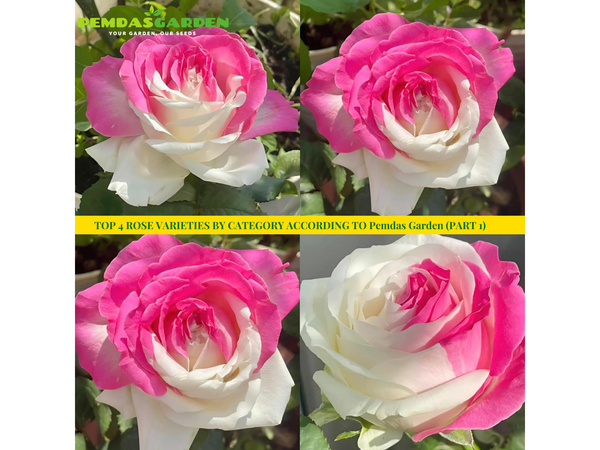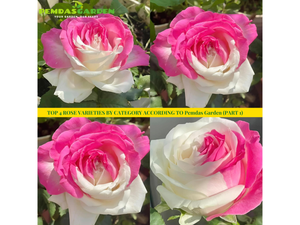Some Ways to Prevent Red Spider Mites Without Using Pesticides

- Taking care of plants without using chemical fertilizers can be time-consuming and exhausting. However, with perseverance, the results will be well worth it. Nature has its own way of balancing and healing, and plants will continue to thrive without the need for countless harmful chemicals, as long as we are persistent, loving, and understanding. When caring for plants in a way that enhances their self-defense and growth capabilities, Pemdasgarden believes that when the plant is strong enough, it will regulate itself to self-care and be less prone to disease if we avoid excessive use of chemical pesticides.
- These are some experiences Pemdasgarden has gained from caring for plants in a natural way, minimizing the use of chemical pesticides in the garden. Hopefully, Pemdasgarden's sharing will be useful to you. Thank you for following and supporting Pemdasgarden, wishing you and your garden a healthy and beautiful bloom.
I. SYMPTOMS OF RED SPIDER MITE
- Yellow, brown spots, red dots, white spots visible moving on the leaf surface.
- The back of the leaf has black-brown spots and a light web of the Spider mite.
- When the infestation is severe, the leaves gradually turn yellow and fall off, dry and curl up.
II. TREATMENT
1. Isolate infected plants from healthy ones.
Before proceeding with treatment, infected plants should be isolated from healthy ones to prevent the spread of the disease and harm to other plants.
2. Trim off infected leaves (if there are many leaves on the plant).
- In cases where there are many leaves on the plant and only a few are infected, it is best to cut off all the infected leaves. After cutting, put the leaves in a plastic bag, tie it tightly, and dispose of it in the trash to prevent the spread of the disease.
- If the disease has spread to the entire plant or there are very few leaves left on the plant, then only cut off the most severely infected leaves. At this point, the plant is very weak, and the leaves are responsible for photosynthesis to synthesize nutrients for the plant. Even though the leaves are diseased, they can still perform these functions to some extent. So we need to keep as many leaves as possible to prevent the plant from becoming too weak.
3. Spray leaf wash.
- Use a high-pressure hose to spray both sides of the leaves until they are clean. If possible, wear gloves to wash each leaf individually, which will help the disease disappear faster.
- This method is the safest but requires continuous use several times for the disease to completely disappear. Typically, for plants that are just beginning to be infected, Pemdasgarden performs this daily in the morning, persistently and continuously for 4-5 days, and the disease will completely disappear.
4. Spray soapy water mixed with baking soda.
- You can mix soap, baking soda, and cooking oil together. Then spray it like normal water spraying.
- Note: If you spray this mixture, it is best to do it in the late afternoon when the sun has set to eliminate the possibility of leaf burn from the sunlight. Also, soap has strong cleaning properties, so when using it, be careful as it can damage the leaves. Usually, Pemdasgarden uses shampoos, baby shower gels that are safest and non-irritating to plants.
5. Spray a slightly spicy mixture of garlic and chili.
- Finely chop garlic and chili and soak them in a little white alcohol overnight, then strain the water the next day and dilute it to spray.
- A more convenient way is that Pemdasgarden often dilutes chili sauce and sprays it.
- The best time to do this is in the late afternoon.
6. Spray various essential oils.
Essential oils that can kill Spider mites include Neem oil, Lavender oil, Cinnamon oil, Lemon oil, Orange oil, Peppermint oil, Thyme oil, Chamomile oil, Patchouli oil, Citronella oil...
III. DISEASE PREVENTION
1. Planting types of plants that attract the natural enemies of Spider mites.
- Predatory mites, predatory bugs, and ladybugs are the biggest natural enemies of Spider mites.
- These insects are attracted by: Some herbs such as Cilantro, Dill, Caraway, Scented-leaved geraniums, Chocolate mint, Coreopsis, Butterfly weed...
2. Avoid environments where Spider mites thrive: Lack of sunlight, dusty leaves.
- In dry and dusty environments, Spider mites become more interested in feeding and will attack Rose plants more densely.
3. Spray leaves daily, keep them clean so that dust does not stick to the leaves too much, creating conditions for Spider mites to grow, develop, and timely remove their eggs.
4. Regular pruning, keeping the plant always ventilated, and sunlight can penetrate.
Thank you to our customers for always following and accompanying PemdasGarden. We wish you the best in choosing the right flower to adorn your garden.









